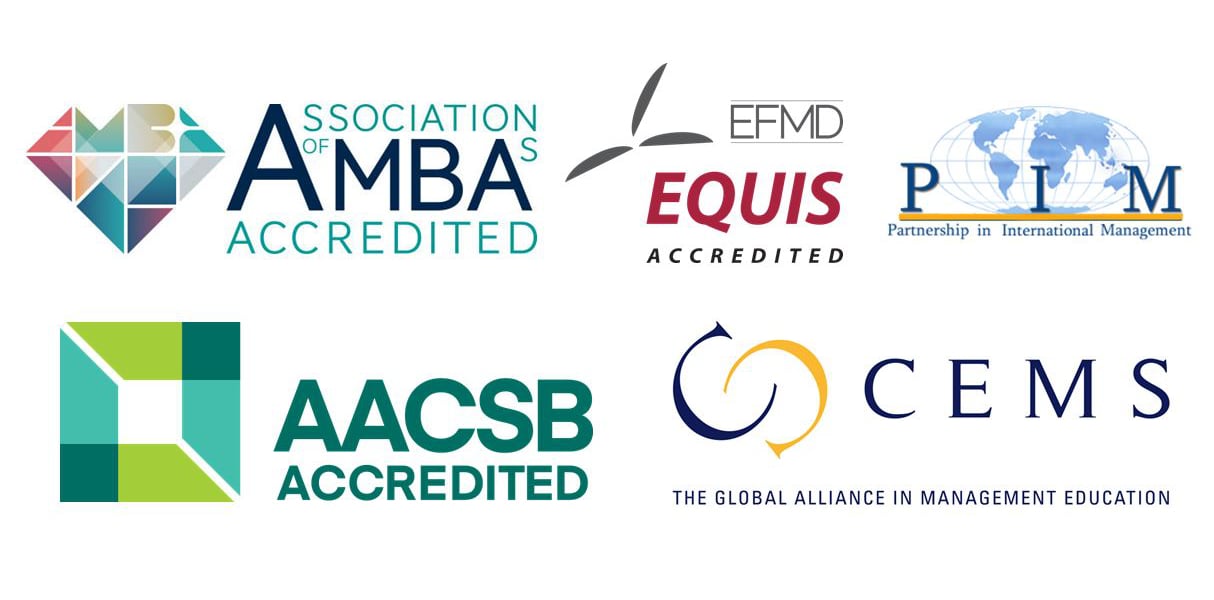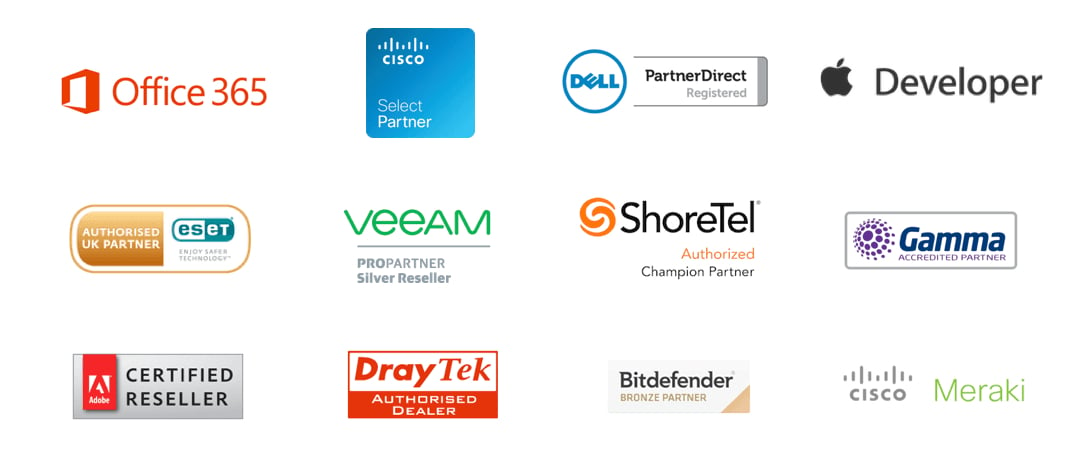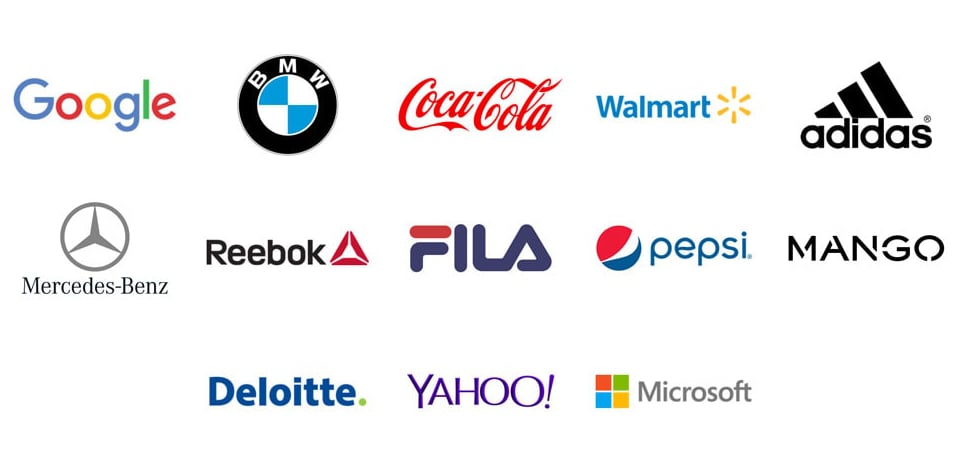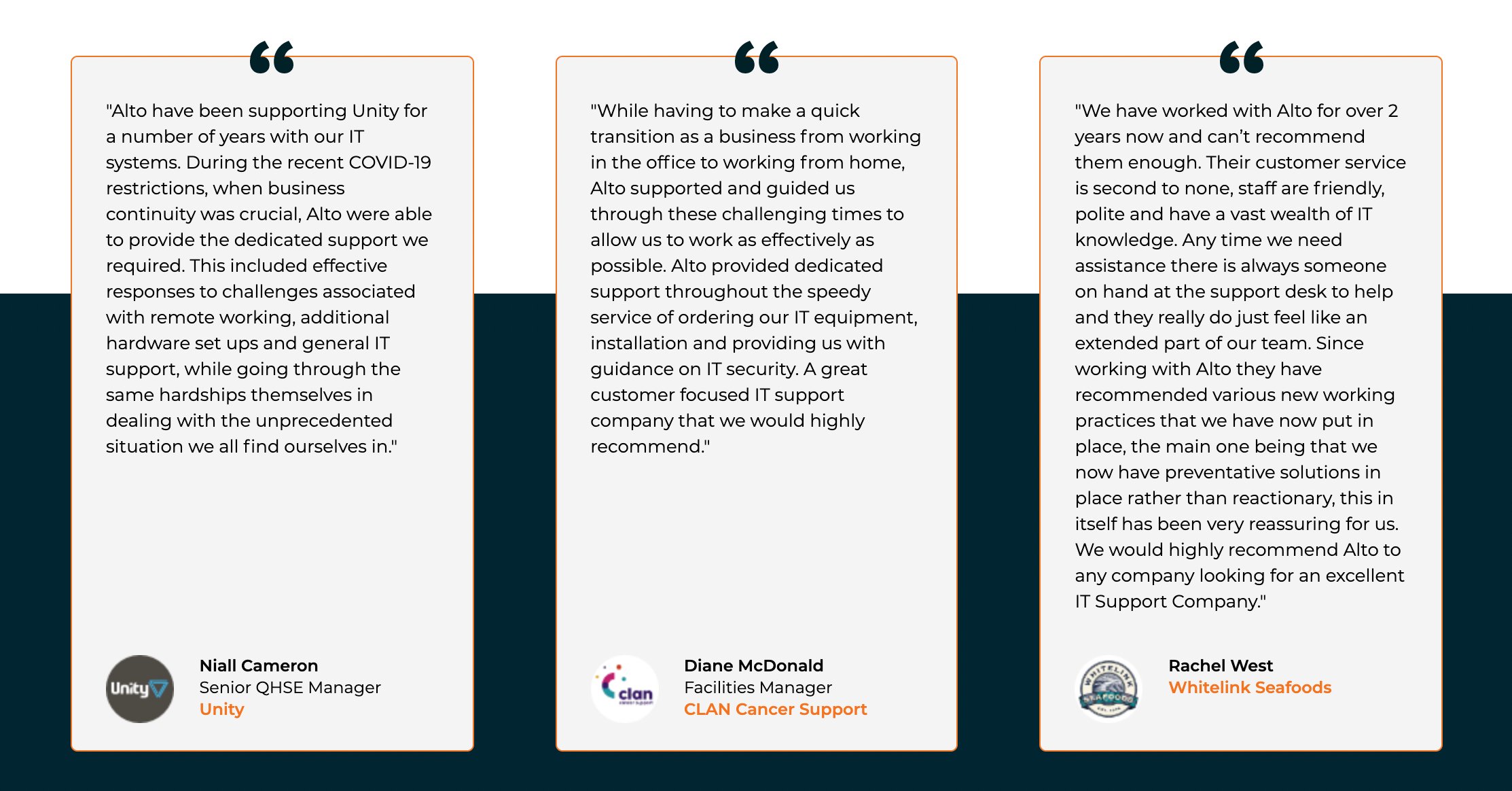Trust is a fickle thing. You can spend hours crafting convincing copy or fine-tuning your homepage banners so that you look like a market-leading firm, but the second your visitors realise that the link to your case studies is broken?

Poof. Their trust’s gone, they’re bouncing off your site and there’s a very good chance that they’ll never come back.
We’re not exaggerating here either. Studies show that 74% of people will leave a site as soon as they encounter a 404 error, and a further 88% say they’d never revisit a site after a bad experience.
Then there’s all the other stuff that helps to build and maintain trust: The social signals that send a subconscious message about the validity of your site and your services. It can be incredibly hard to measure the importance and performance of these elements, but experts still agree that they play a vital role in establishing your brand's credibility.
This is all relatively straightforward for our B2C cousins. All they need to do is smack some credit card logos in the footer, use an app like Yotpo to drag user-generated content onto their product landing pages and make sure their social media channels are clearly visible.
But it’s harder for B2B businesses. We’re still selling based on emotion but people are much more skeptical about the validity of client quotes and other forms of social proof. People are also (much) more likely to overlook basic trust signals like payment badges on B2B sites and things like social media channels carry less weight too.
But if you’re willing to muck in and get your hands dirty, there are some things you can do to build trust and cement your reputation as a credible business.
Get The Basics Right
People hate unprofessional websites. Research published by Sweor suggests that most web users decide whether they like a website in just 0.05 seconds, and approximately 38% of the adults Sweor surveyed also said that they’d stop engaging with a website if they found its content or layout ‘unprofessional’.
Now we’ll be the first to admit that quantifying unprofessional isn’t easy, but long-standing experience has taught us that you can avoid a lot of heartache (and create a fantastic first impression) by making sure that:
- Your pages load quickly
- Your banner/hero images and other elements that load in above the fold look sharp and attractive
- Your homepage looks clean, with plenty of white space and an intuitive layout
- Text and Calls To Action (CTAs) load quickly
- All of the contact forms on your site work, and provide positive feedback when a message is submitted (we’re talking thank you messages, green ticks etc.)
- Your menus work, and your main nav is easy to navigate
- Your site search returns relevant results
- Your smaller images and videos are sharp and clear
- The links in your footer work
- CTA buttons and other clickable elements function correctly.
It’s also worth thinking about how your site looks on mobile browsers. The same studies that we referenced above show that up to 63% of all web visits are conducted on mobile phones, and approx 85% of adults think that mobile websites should be as good as - or better than - their desktop counterparts.
Running a clunky site that doesn’t work on mobile? Get in touch. We design and build fully responsive websites for clients in a range of B2B verticals and we’re always looking for a new challenge.
We’re also well placed to help you carry out partial redesigns, boost your page load speed or refresh clumsy looking pages soif you’re short several of the criteria mentioned above, we are always worth a shout.
.jpg?width=2400&name=austin-distel-rxpThOwuVgE-unsplash%20(1).jpg)
Add Effective Trust Signals
Once you’ve taken care of the problems that erode trust, it’s time to start thinking about the page elements that actively boost people’s perception of your brand.
As mentioned above, B2C brands get an easy ride here. Adding social proof, product reviews and a smattering of badges borrowed from major payment providers is normally more than enough to cement them as a trustworthy brand but it’s a bit harder for B2B companies.
Our main trust signals are:
Industry Accreditations
Most industries have impartial 3rd party bodies that offer some form of accreditation. The International Organization for Standardization (ISO) and Bureau Veritas are obvious examples, but there are a whole host of vertical specific vendors out there too.
Architects can get accreditation from groups like RIBA and the RTPI, construction firms can be certified by the British Safety Council and oil clients can get FPAL registered.
The list goes on, and while obtaining industry accreditations can be quite expensive, it’s worth remembering that those little logos are often worth their weight in gold.
Add them to key landing pages around your site and UWP group say that you could see a 3-400% increase in conversions. More than enough to get the board’s attention…

It doesn’t have to be industry accreditations either. Some of our clients list standards and codes that they have to comply with (like the ASME BPVC for pressure vessel manufacturers). Or industry associations they’re a part of (like the Finance and Leasing Association for lenders).
The important thing to remember is that 3rd party logos can have a tremendous impact on people’s perception of your brand; cementing the impression that you’re an established brand and an integral part of your industry.
Partner Logos
Similar to the industry accreditations mentioned above, partner logos let people know that impartial 3rd party companies think your brand is worth partnering with. We won’t dive into the ins and outs of consumer psychology here, but it’s definitely worth noting that your customers don’t necessarily need to recognise the logos you're using.
Obviously they have to be real and legitimate or you run the risk of completely ruining your credibility but there’s still a tremendous amount of value in listing partnerships from very niche companies that your prospective clients have never heard of.
Take, for example, this case study which showed that adding a well-known partner logo to key landing pages could improve conversion rates by up to 107%

You don’t have to hide partner logos down in the site footer either. In fact, we think any badges - irrespective of whether they’re industry accreditations, certifications or partner logos - are best placed in the middle of landing pages so that they’re always in plain sight.
Client Rolls
Worked for big names that your visitors will recognise? There’s no better way to cement your reputation and demonstrate expertise. But that’s not to say client logos are only helpful if you’ve worked for blue chip companies.
Several studies show that businesses with less glamorous portfolios should still be shouting about their success stories. An article from the (aptly named) Trust Signals blog even suggests that well-placed client logos could increase conversion rates by up to 70% – irrespective of whether people recognise the logos you’ve featured.

But again, placement is everything. Try to make sure you’re placing client logos in context (i.e. on the pages that describe services or products they purchased) to ensure that you’re building a coherent story about the relationships you’ve built.
It’s also worth thinking about the way you present client logos. Company logos can be very varied, and you don’t want to build a client roll that looks disjointed or rushed. Consider listing them all in greyscale for consistency, or at least taking steps to make sure that they’re all a similar size.
Client Testimonials
Client testimonials are the only form of social proof available to many B2B brands. Luckily they’re also one of the most powerful. Research published by Strategic Factory shows that 92% of people read testimonials when considering a purchase, and a further 88% of people said that they trusted these reviews just as much as personal recommendations which is pretty incredible, all things considered.

And if you’re sitting there thinking “all good and well, but nobody makes business decisions based on personal recommendations anyway.” It might be time to rethink some of those assumptions because:
- Business people are approximately 50% more likely to buy a product or service that demonstrates personal value through emotional appeals.
- Regular use of client testimonials can increase your revenue by up to 62%
Video testimonials are best, with 59% of executives saying that they’d rather watch a video than read text on the same subject. But even the traditional pull quotes work wonders so start emailing past clients, and asking them to say something nice about your services...
(Detailed) Case Studies
When all else fails, linking visitors to a relevant case study helps to build a small amount of trust. There’s also a good chance that customers will click through to - and read - your case studies, which makes them a good way to communicate expertise and cement your credentials.

A word of warning though: Case studies don’t work if they’re thin and light on detail. People want to read specifics and they don’t trust empty filler that talks around a subject. You might not be able to mention some of your clients by name, but you can set the scene; go into detail about what you did for a given project and talk a bit about the challenges you faced and (hopefully) overcame.
Doing this will set you streets ahead of the competition, and help to build a coherent story about your abilities.
Speak In Plain English
Once you’ve added some convincing trust signals, it’s time to take a look at the way you’re talking to prospective customers. We’ve already talked about the many benefits of writing in clear, simple and straightforward English but it’s worth noting that talking in plain English can help to establish trust and build a connection with site visitors of all stripes.
Way back in 2017, The Nielsen Norman Group conducted a usability study where they asked various subject matter experts to research topics close to their own work and report back on what they found.
Time and time again, they found that their subject matter experts preferred content that was easy to digest, concise and scannable. More importantly, they also found that content capable of ticking these boxes was generally thought to be more credible so next time you’re tempted to type out a sentence full of jargon, stop and think about whether your target audience really trust people who obfuscate.
Want to know more about writing in plain English? We’ve written an in-depth guide here.

Share Useful Content – Without Trying To Sell
Research shows that people are more inclined to trust brands that they view as helpful, and several marketing luminaries have pointed out that being transparent about your expertise is key to building a brand that people want to buy into.
The Content Marketing Institute is quick to point out that sharing useful content is one of the easiest ways to share your knowledge and help your customers and we definitely agree with this assessment.
Sharing helpful content has been key to our own success, but there is an important caveat: You have to do it willingly, without looking like you’re trying to sell something.
People are quickly becoming immune to content that’s just a thinly veiled sales pitch. They see through your vain attempts to mask or gate the valuable insights they want from your articles and they’re quick to lose patience with brands that play these games.
So if you’re going to start content marketing to build trust, make sure that you’re going about it the right way.
We’re content marketing experts with hands-on experience in this area so if you’re running a B2B brand and you’re keen to start building trust with your target audience, book a 30 minute chat with David – our founder and chief strategist.
He’ll be more than happy to help you navigate the complexities of a modern-day content marketing campaign, or help you build out the trust signals mentioned earlier in this article.

